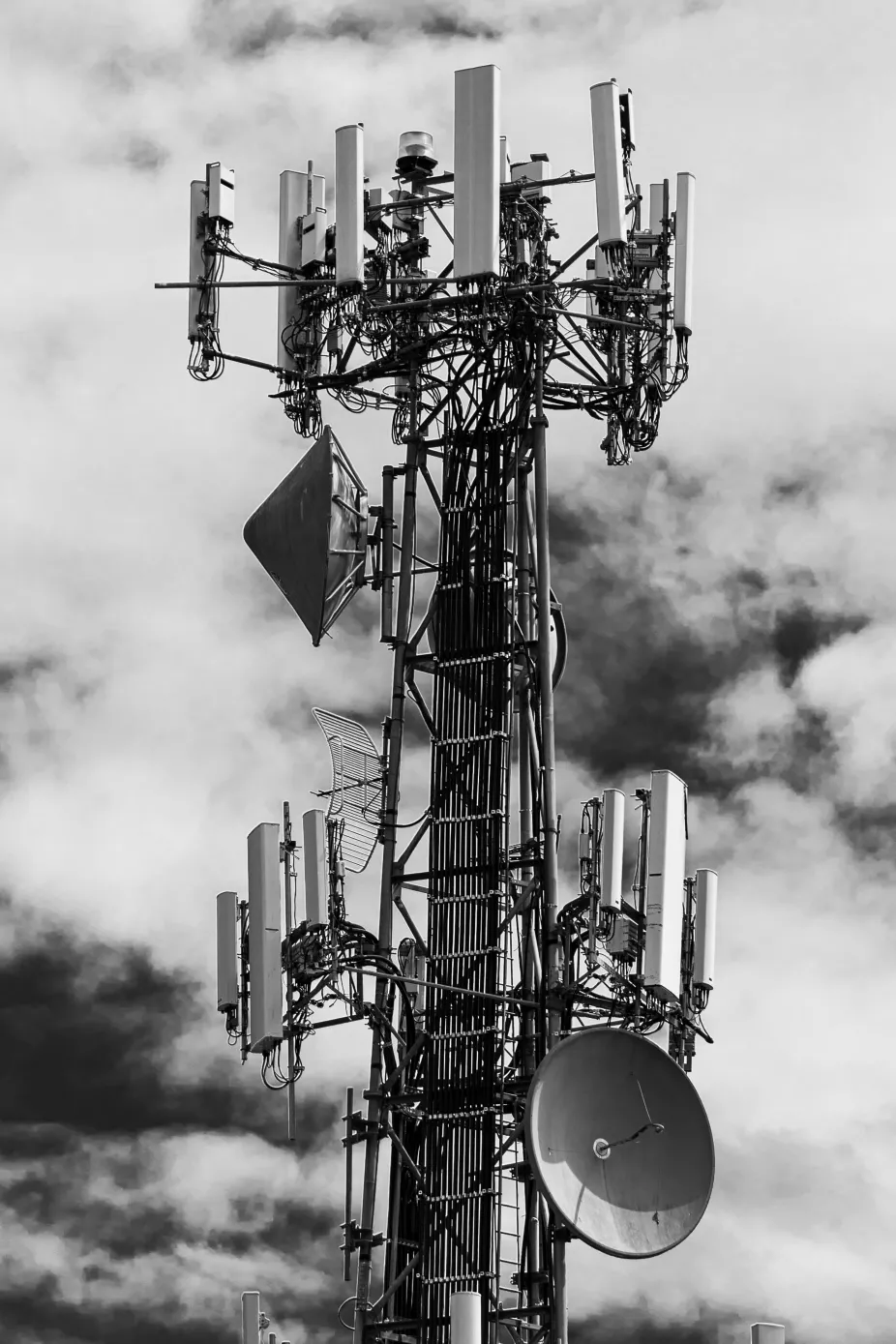Radio Waves
Radio waves are a type of electromagnetic radiation. A radio wave has a much longer wavelength than visible light. Humans use radio waves extensively for communications.

This radio tower has both rectangular and circular antennas to transmit and receive radio frequency energy.
Photo by Christina Telep on Unsplash
The wavelengths of radio waves range from a few millimeters (tenths of inches) to hundreds of kilometers (hundreds of miles). Visible light, for comparison, has wavelengths in the 400 to 700 nanometer range, about 5,000 times shorter than the shortest wavelength radio waves. Radio waves oscillate at frequencies between a few kilohertz (kHz or thousands of hertz) and a few terahertz (THz or 1012 hertz). "Far infrared" radiation borders radio waves along the electromagnetic spectrum and has slightly higher energy and shorter wavelengths than radio waves.
Microwaves are short wavelength radio waves which we use for cooking and for communication. Microwaves have wavelengths between a few millimeters and tens of centimeters (tenths of inches to tens of inches).
Various frequencies of radio waves are used for television and FM and AM radio broadcasts, military communications, mobile phones, ham radio, wireless computer networks, and numerous other communications applications.
Most radio waves pass freely through Earth's atmosphere. However, some frequencies can be reflected or absorbed by the charged particles in the ionosphere.
© 2018 UCAR with portions adapted from Windows to the Universe (© 2005 NESTA)